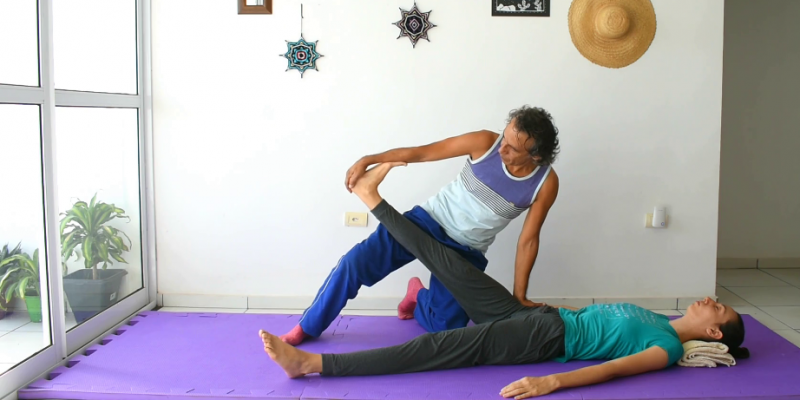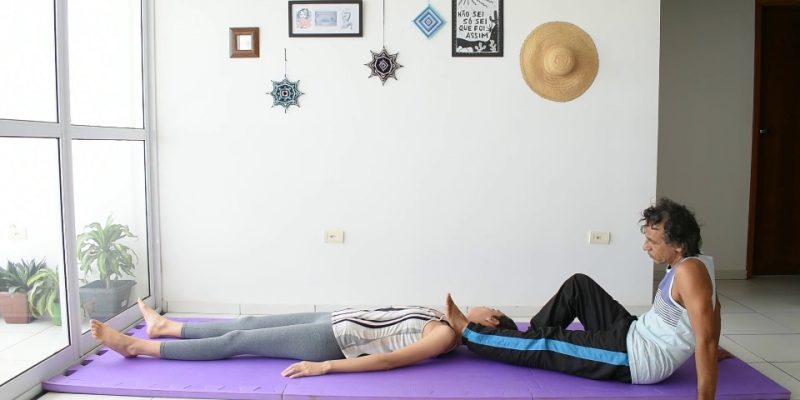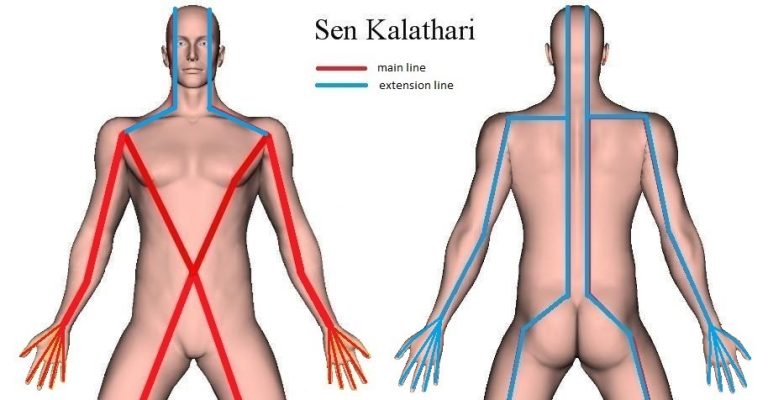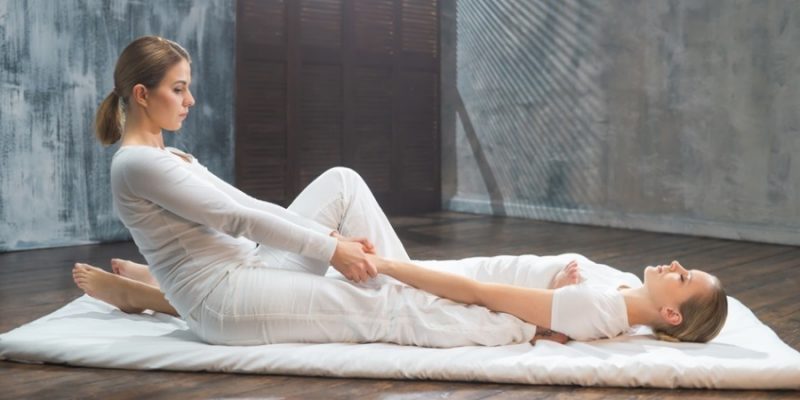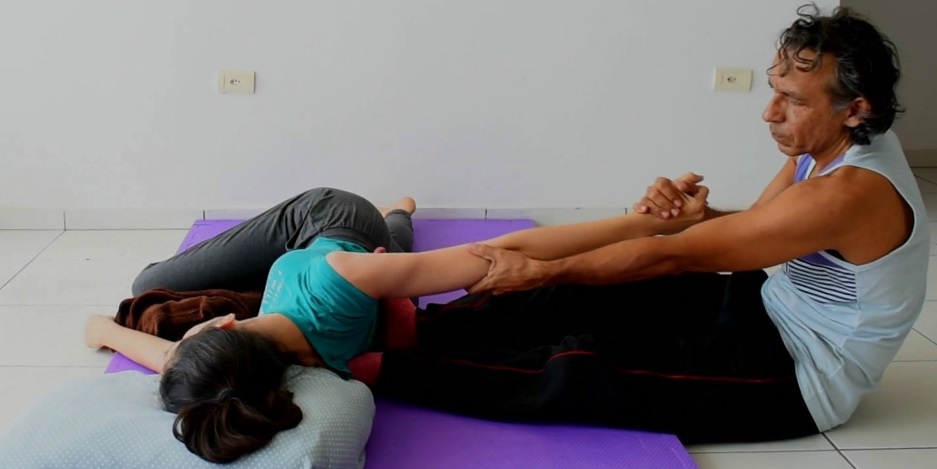
Thai Massage (or Thai Yoga Massage) can be given on a massage mat or special mattress on the floor, on a massage bed or a massage table, and even on a massage chair. There are advantages and disadvantages for each option. However, traditionally in Thailand, Thai Massage was usually applied with the receiver lying on the floor on a mat. And not without reason as you will read in the remainder of this post.
As it is, there are some major differences between giving Thai Massage on the floor and on the massage table (by the way, I will not talk about Thai Chair Massage in this article).
These differences are predominantly about the number of techniques that can be done on either the floor or the table, and in the way certain similar techniques are (or can be) performed. For instance, it’s more convenient to massage with your feet and knees (or even stand on the receiver) when the receiver is placed on the floor.

There’s also a big difference for Thai Massage therapists in the sense that they will make (and/or will need to make) very different moves and movements with their body when you compare floor-based massage to table massage.
In general, massage practitioners think or feel that it’s harder for their bodies to work with a client on the floor than with the client lying on a massage table.
I personally think that it’s actually the other way around, but that your body will need some time to adapt to floor-based work. In fact, it’s better for your body mechanics to work on the floor, and moreover, you engage your entire body instead of only your upper body.
Besides that, you can lie down, sit, kneel, squat, stand, that is — you can change your working positions at will and don’t strain only certain parts of your body.
In any case, on the floor you typically have all space available to work with your client. You could basically see the floor as a very big massage table. Unlimited size.
It not only means that you can move more freely around the receiver (and also move the receiver freely around), it also means that it’s easy to be on top (standing, sitting, or leaning), which gives a therapist much more options to carry out certain techniques. It’s also easier to use a myriads of props and supports for your client; you simply have the space to do so.
As the massage therapist is able to move or position themselves “on a higher level” than the receiver (meaning on top or over them), it also gives them much more options to use their bodyweight while carrying out techniques, which saves precious energy and prevents health issues arising out of repetitive strain.
Another advantage of the floor mat over the massage table is that it’s much easier to work with a client who’s lying in the side position or with a client who’s sitting. On the floor the client has more space to position themselves freely in the side-lying position, and as for the seated position, the therapist has much better access to the receiver’s body parts.
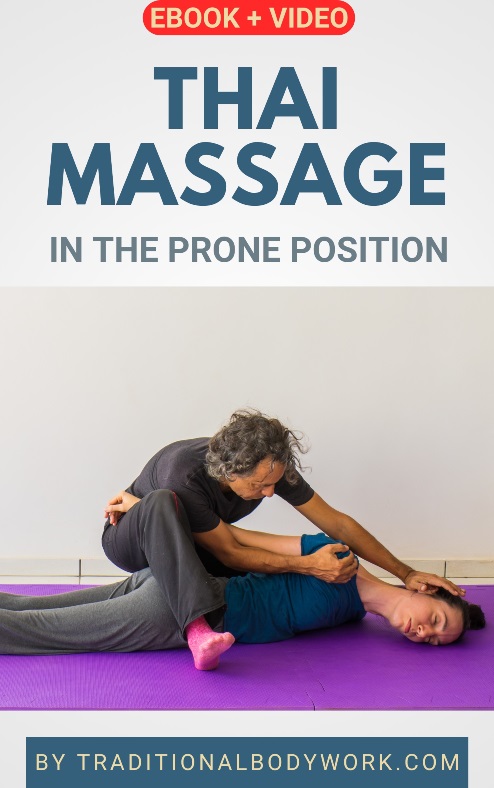
But even for the prone and supine position things are better, for instance, the client can spread out their arms widely and freely (with support of the floor to lay them on) and the therapist can have easy access to massage them.
Now, a Thai Massage session (depending on the style you practice, by the way) usually contains a great number of large, wide-surface stretches (fully spreading and pulling the legs and arms, and so on), and those are rather difficult to do on a massage table.
As a therapist you simply don’t have the means to do them “normally” and accurately. It’s hard to take the necessary physical distance and/or use the appropriate leverage-tools (which often includes your feet and legs), unless you put yourself in rather odd and unergonomic positions.
Well, if you look at what I’ve written above, you would assume that I think that doing Thai Massage on the massage table is an absolute no-go. To be clear about this: I’m not a fan of Thai Massage on the table, but there can be valid reasons to wanting to carry it out on a massage table anyway.
As I don’t want to repeat myself, you may want to read some other articles of mine in which I give you some reasons why it can still be a good idea. Just check out the following posts: Is Table Thai Massage still Thai Massage?, Hands Free Thai Massage, and Thai Massage for Elderly People.








